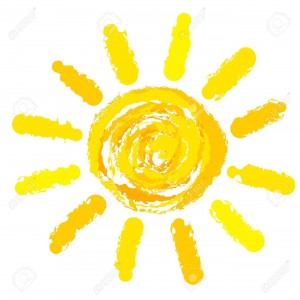By Anca Gagiuc on October 20, 2015 in Technology
The price for photovoltaic cells is plunging, in the last six years it has fallen by at least 50 percent. According to a Gallup poll, 79 percent of Americans expressed the interest for the U.S. to develop more solar power. The product is already growing, accounting for 36 percent of all new electric capacity through the first nine months of 2014, according to the Solar Energy Industries Association. Although on an upward swing, solar power has yet a lot of catching up to do.
fallen by at least 50 percent. According to a Gallup poll, 79 percent of Americans expressed the interest for the U.S. to develop more solar power. The product is already growing, accounting for 36 percent of all new electric capacity through the first nine months of 2014, according to the Solar Energy Industries Association. Although on an upward swing, solar power has yet a lot of catching up to do.
The U.S. Energy Information Administration reports that the United States generated approximately 4,093 billion kWh of electricity in 2014. The most part of the electricity (two-thirds) came from fossil fuels (mainly coal and natural gas), and one-fifth from nuclear. Solar accounted for only 0.4 percent. The reasons are various: the roof is facing the wrong way or needs replacing, there is too much shading from mature trees or other buildings, the renter status which doesn’t give them the right to make such a decision, simply lacking those 10 or 15 grand to pay for installation, or the not-so-good credit that cuts any possibility of financing or long-term purchase agreement.
The future looks different. A new sharing platform dubbed Yeloha focuses on a new approach, which combines the power of social networks and the attractiveness of the sharing economy, aiming to offer solar power regardless of location of income level. What’s the plan?
Yeloha has two types of customers—sun hosts and sun partners. The sun hosts are represented by the people living under eligible sunny roofs, but can’t afford the costs for the panels. In their case, Yeloha will install its own panels at no cost and give them a portion (typically one-third) of the electricity they produce, for free.
In other words, the homeowners who become sun hosts will pay nothing for the hardware and also will pay less monthly for electricity. Significant advantages in the electricity bill will get those with huge roofs, but also the rest will see an improvement in their bank accounts after paying for power.
The second type of customers, the sun partners, are the people who want and afford solar power, but don’t have the right roof for it. Yeloha facilitates for them to buy solar credits in any amount they choose; this way they’ll pay less than they normally pay for electricity by other means. The discount is not huge—about 10 percent for those who choose to buy a year’s worth of supply, and more for those who commit to three years or more.
“While they save money, they also save the world,” says Amit Rosner, the Israeli entrepreneur behind Yeloha, “but this is the order of priorities we see. We don’t want to speak only with tree-huggers. We love tree-huggers, we are tree-huggers, but there aren’t enough people who care. So we want to drive positive change through what matters most to people.”
In addition, sun partners can choose their hosts, should they desire to, just as hosts can choose specific partners. In fact, everyone will have access to online tools that measure production and consumption, thus building a sense of community, with Yeloha as “the conductor of the orchestra”.
Yeloha is not the only peer-to-peer energy trading. Examples include Vandebron in the Netherlands and Gridmates in Texas. However, Yeloha seems to be the best funded initiative so far. Perhaps this is only the beginning of cooperative arrangements in the power sector. Thoughts?


